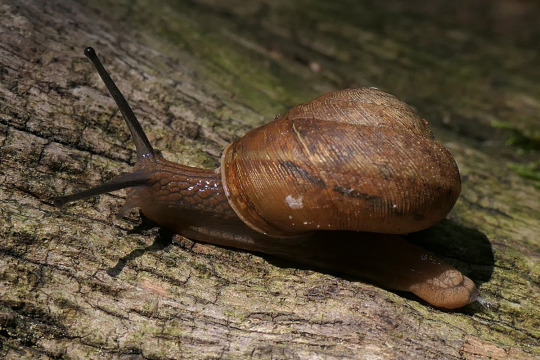Imagine the excitement of finding an organism that was presumed extinct. Until 2019, the handsome land snail Webbhelix multilineata had not been documented anywhere in Pennsylvania since 18 May 1947 so it was presumed locally extinct (it does still survive elsewhere in the Mid-West). Finding a living individual of that species in Pennsylvania this year is cause for excitement.
Webbhelix multilineata has never been an abundant snail in Pennsylvania. Of 10 museum records of that species in PA, all but one is in western Pennsylvania from 1898 to 1947. The one record from eastern Pennsylvania, in Berks County, was collected about 1938.

Fig. 1. Webbhelix multilineata juvenile found in York County in 2019 (photo: Kerry Givens).
Photographs of an immature Webbhelix multilineata in Hellam Hills Natural Area in York County, Pennsylvania were sent to me on 2 Jun 2019 (Fig. 1). I recognized the species by the reddish spiral lines on the shell and by the relatively large, reddish body tubercles. This sighting is the first record in 72 years of Webbhelix multilineata anywhere in Pennsylvania, and it represents a new county record as well.
Curiously, this snail was seen in the relatively dry habitat of a mature deciduous forest, at least 150 m from the nearest stream. Five scientific publications indicate its habitat to be low, moist areas including floodplains, marshes, and swamps. I wonder why the York County snail is from such a different habitat.
Because this snail is now known to be living in Pennsylvania, it can no longer be considered locally extinct, so conservation organizations such as the Natural Heritage Program will monitor it. Although there is no evidence that the snail population recovered (as opposed to just being overlooked), I like to think that conservation efforts have played a role in improving conditions for this snail.
I am grateful to Kerry Givens for noticing and photographing the snail, and for alerting me to its existence.
Timothy A. Pearce, PhD, is the head of the mollusks section at Carnegie Museum of Natural History. Museum employees are encouraged to blog about their unique experiences and knowledge gained from working at the museum.
